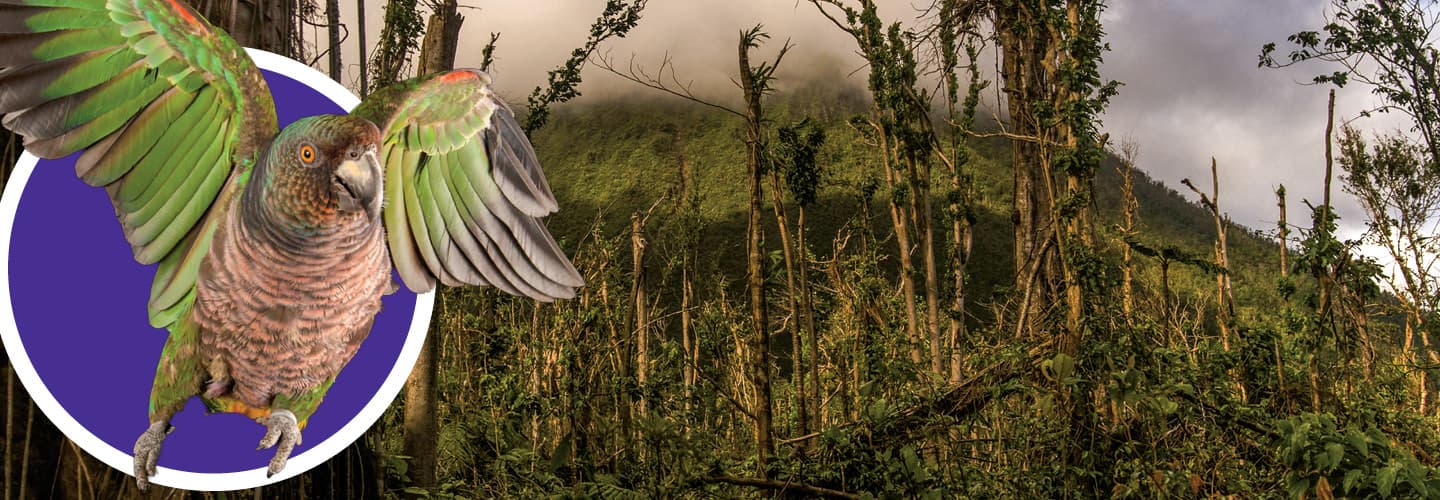The Imperial Amazon, a parrot found on the Caribbean island of Dominica, has lost more than 60 percent of its habitat since 2001. So has the Puerto Rican robber frog, the Barton Springs salamander, the collared nightjar, and many other species all over the globe.
Wildlife is disappearing around the world, from both oceans and land. One of the main causes: Humans are taking over more and more of the planet, erasing what was there before. Most converted land is taken for agriculture, such as clearing forests to graze cattle or plant crops. Other wild habitats have been turned into cities and roads. Per capita consumption is soaring as the human population surpasses 8 billion.
Biodiversity, or the variety of life on the planet—including plants, invertebrates, and ocean species—is declining at rates unprecedented in human history, according to the Intergovernmental Science-Policy Platform on Biodiversity and Ecosystem Services, an independent intergovernmental body. The group’s projections suggest that a million species are threatened with extinction.
It’s not only wildlife that will suffer if populations continue to plummet, experts say; human well-being is tied to the survival of other species too. More than 75 percent of global food crops rely on animal pollination, for example. Losing biodiversity can cause ecosystems to collapse, scientists say, threatening our food and water supplies.
But a different path may be possible: In December, roughly 190 nations met in Montreal and approved a sweeping new United Nations (U.N.) agreement to tackle biodiversity loss under a treaty called the Convention on Biological Diversity.
“Humanity has become a weapon of mass extinction,” says António Guterres, the U.N. secretary general. “It’s time to forge a peace pact with nature.”
The Imperial Amazon is a parrot found on the Caribbean island of Dominica. Since 2001, the species has lost more than 60 percent of its habitat. So have the Puerto Rican robber frog, the Barton Springs salamander, the collared nightjar, and many other animals all over the globe.
Wildlife is disappearing around the world. It’s happening both in the oceans and on land. Humans are one of the main causes of this loss. As people have taken over more and more of the planet, they’ve erased what was there before. Most converted land is taken for farming, such as clearing forests to graze cattle or plant crops. Other areas where wildlife once lived have been turned into cities and roads. And as the human population surpasses 8 billion, the amount of goods and resources used by each person is soaring.
Biodiversity is the variety of all life on the planet. That includes plants, animals that don’t have backbones, ocean species, and more. Biodiversity is declining at rates that have never been seen in human history, according to the Intergovernmental Science-Policy Platform on Biodiversity and Ecosystem Services, an independent intergovernmental body. The group’s projections suggest that a million species are threatened with extinction.
Experts say that it’s not only wildlife that will suffer if populations continue to drop. Human well-being is also tied to other species’ survival. For example, more than 75 percent of global food crops rely on animal pollination. Scientists say that losing biodiversity can cause ecosystems to collapse. That would be a threat to our food and water supplies.
But a different path may be possible. In December, about 190 nations met in Montreal to devise a plan to tackle biodiversity loss. They approved a broad new United Nations (U.N.) agreement to do so under a treaty called the Convention on Biological Diversity.
“Humanity has become a weapon of mass extinction,” says António Guterres, the U.N. secretary general. “It’s time to forge a peace pact with nature.”

